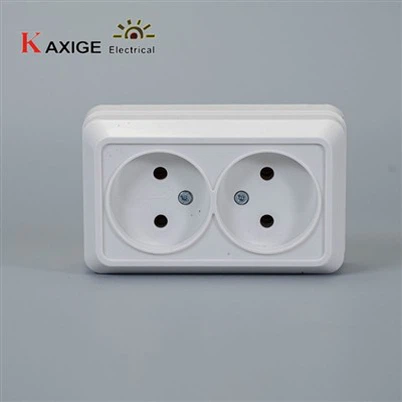What is a limit electric switch?
Leave a message
Hey there! As an electric switch supplier, I often get asked about different types of switches, and one question that pops up quite a bit is “What is a limit electric switch?” Well, let's dive right into it and break it down in a way that's easy to understand.
First off, a limit electric switch is a crucial component in many electrical systems. It's basically a switch that's designed to stop or start an electrical circuit based on a specific condition. Think of it like a traffic cop for your electrical currents. It monitors things like position, pressure, temperature, or even the flow of liquids or gases. When the monitored condition reaches a pre - set limit, the switch kicks into action and changes the state of the circuit.
Let me give you a few real - world examples to make it clearer. In an elevator, limit switches are used to ensure that the elevator stops at the right floors. There are switches at each floor level, and when the elevator car reaches a particular floor, the limit switch is triggered. This sends a signal to the elevator's control system to stop the car and open the doors. Without these limit switches, elevators would be a lot less safe and reliable.
Another common use is in industrial machinery. For instance, in a conveyor belt system, limit switches can be used to detect when a product has reached the end of the belt. When the product hits the limit switch, it can trigger an action like diverting the product to another conveyor or stopping the belt altogether. This helps in automating the production process and preventing jams or damage to the machinery.
Now, let's talk about how limit switches work. There are different types, but most of them operate on a simple principle. They have a sensing element that can detect the change in the monitored condition. This sensing element is connected to a set of contacts. When the condition reaches the pre - set limit, the sensing element causes the contacts to open or close. If the contacts close, it allows the electrical current to flow through the circuit, and if they open, the current is interrupted.
There are mechanical limit switches, which use physical contact to operate. For example, a lever - type limit switch has a lever that gets pushed or pulled when an object comes into contact with it. This movement of the lever causes the contacts inside the switch to change their state. Then there are non - mechanical limit switches, like proximity switches. These use magnetic, optical, or capacitive sensors to detect the presence of an object without physical contact. They're great for applications where you don't want any wear and tear on the switch due to repeated contact.
As an electric switch supplier, I offer a wide range of limit switches to meet different needs. But we also have other types of switches in our catalog. For example, check out our 73B 1 Gang Socket Grounding. It's a high - quality socket that provides a safe and reliable connection for your electrical devices. The grounding feature ensures that any electrical faults are safely diverted to the ground, protecting you and your equipment.


If you're looking for a switch to control multiple circuits, our 73B 2 Gang Switch is a great option. With two separate switches in one unit, you can control two different lights or appliances from a single location. It's convenient and easy to install.
And for those who need multiple sockets with grounding, our 73B 2 Gang Sockets Grounding is the way to go. It provides two grounded sockets, allowing you to plug in multiple devices safely.
The quality of our switches is top - notch. We use high - grade materials in the manufacturing process to ensure durability and reliability. Our limit switches are designed to withstand harsh industrial environments, with features like dust - proof and water - resistant enclosures. And all our products go through rigorous testing before they leave the factory, so you can be confident that you're getting a product that will perform well.
When it comes to choosing a limit switch, there are a few things to consider. First, you need to think about the type of condition you want to monitor. Is it position, pressure, or something else? Then, you have to look at the operating environment. If it's a dirty or wet environment, you'll need a switch that's designed to handle those conditions. Also, consider the electrical requirements, like the voltage and current ratings of the circuit the switch will be used in.
In conclusion, limit electric switches are an essential part of many electrical systems. They play a crucial role in ensuring the safety, efficiency, and automation of various processes. Whether you're in the elevator industry, industrial manufacturing, or just need a reliable switch for your home, understanding how limit switches work and choosing the right one is important.
If you're interested in purchasing limit switches or any of our other electric switch products, I'd love to have a chat with you. We can discuss your specific needs and find the perfect solution for you. Don't hesitate to reach out and start a conversation about your procurement requirements.
References
- Electrical Engineering Handbook, Third Edition, CRC Press
- Industrial Control Technology, Pearson Education






